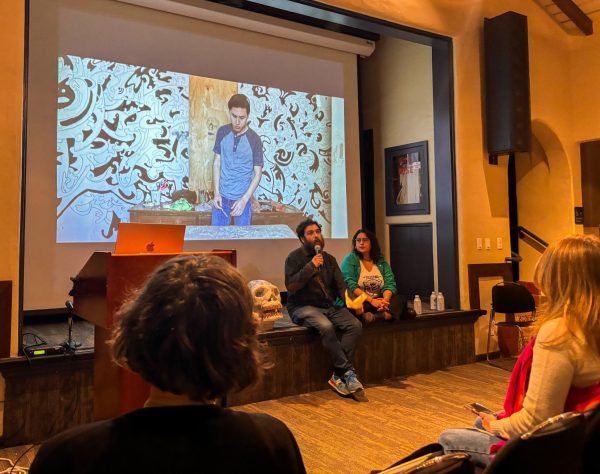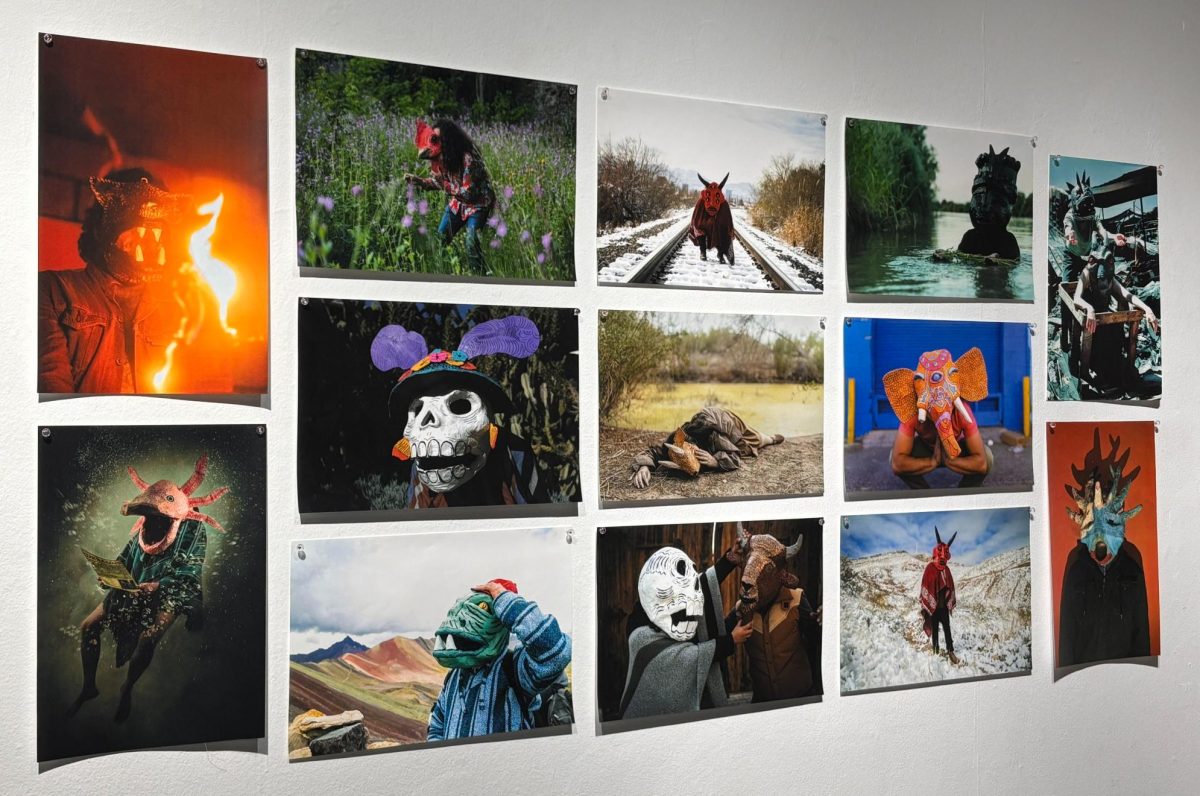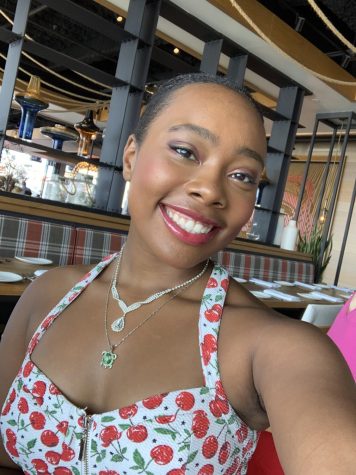The Xingaderas Artist Collective spoke candidly about their paper-mache work at an artist panel at San Diego State University on Feb. 22.
Held at Scripps Cottage, SDSU’s Arts Alive promoted the discussion panel as a part of their discovery series, which explores critical issues through various mediums. All university-produced, the series aims to encourage inclusivity and impactfulness.
Kerianne Quick, a professor at the School of Art, organized the event and served as moderator for the four panelists. Along with Xingaderas, lecturers Carlos Beltran and Shelley Orr added to the intellectual discussion.
The Xingaderas duo, Manuel Urueta and Celina Galicia focused on their collaboration and openness to the craft. The panel termed the paper-mache collective a “coalition of humanity.” It allowed a conversation about life and death to ebb and flow.
Urueta demonstrated how he viewed his art pieces, donning the “death” mask as people trickled into the event.
“There is light, and there is dark and me- like there is in everybody,” Urueta said. “I want to give a little light to the dark we all have, which is part of all of us.”
Urueta sat unmoving, unspeaking and further confirming how art reflects the human experience. Xingaderas embraced the unique stories each of their masks revealed about certain aspects of life.
Beltran, a professor of Anthropology, noted how prominent the storytelling feature is within their work.
“He was possessed by the mask,” Beltran said. “We know masks are a metaphor for many different cultures, so Manuel was quiet. He

represented what he wanted to represent.”
This commitment to the craft was evident as Urueta and Galicia spoke of their partnership.
Urueta’s passion for paper mache began in high school, and the two officially met on a short film set. The inspiration for Xingaderas came from the raw creativity of wanting to make anything out of something. It’s a broad term, and anything can be a “chingadera.”
Xingaderas focused specifically on masks due to their cultural relevance and the idea of creating beyond the established borders. Orr acknowledged that “borders” are a human-made concept. Therefore, Xingaderas’s willingness to reach beyond limitations with their art was appreciated.
Their passion for collaboration has leaked into their professional lives by holding various creative workshops.
The final culmination of this boundary-breaking project came from the School of Art and Design’s Installation Gallery. Students were allowed to exhibit their paper mache works created in the workshops.
Many students built masks, while others opted for different pieces.
“I was part of the workshop, so I got to see their thought process as artists,” Fernanda Gaspar, a fourth-year business major, said. “And then see the other side they do of film and how they connect.”
Gaspar appreciated SDSU for spreading the word about artists in the area, hence why she was able to feature her work at the show.
Not one seat was empty at Scripps Cottage. Audience questions bloomed by the end of the discussion, students were eager to learn more about their creative process.
The panel maintained its view to themes about the duality of life and how cultures feel emotions differently.
The atmosphere remained fresh and encouraged those to seek out new ventures while embracing all facets of life through passion and creativity.
To learn more about Arts Alive, visit their website.











